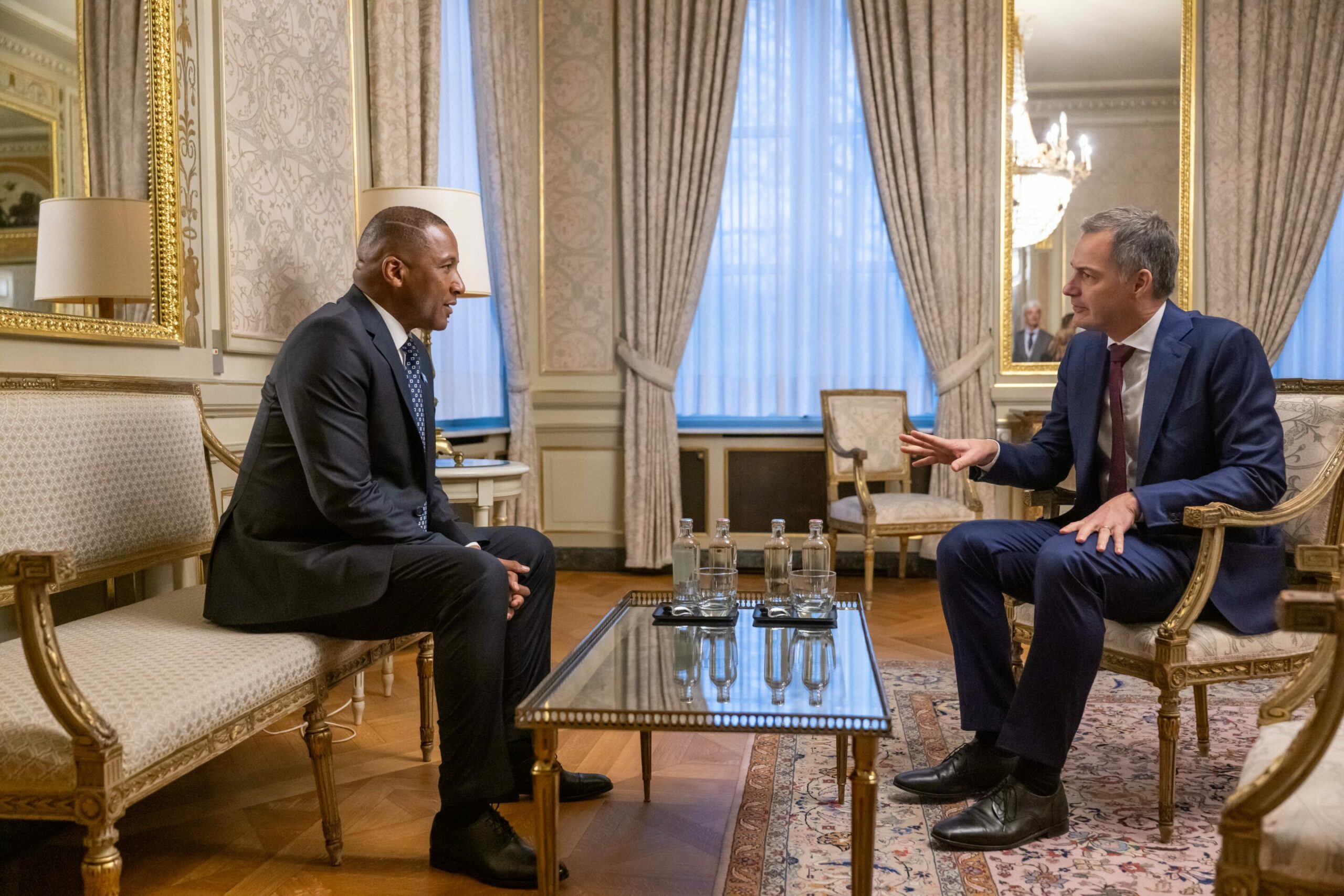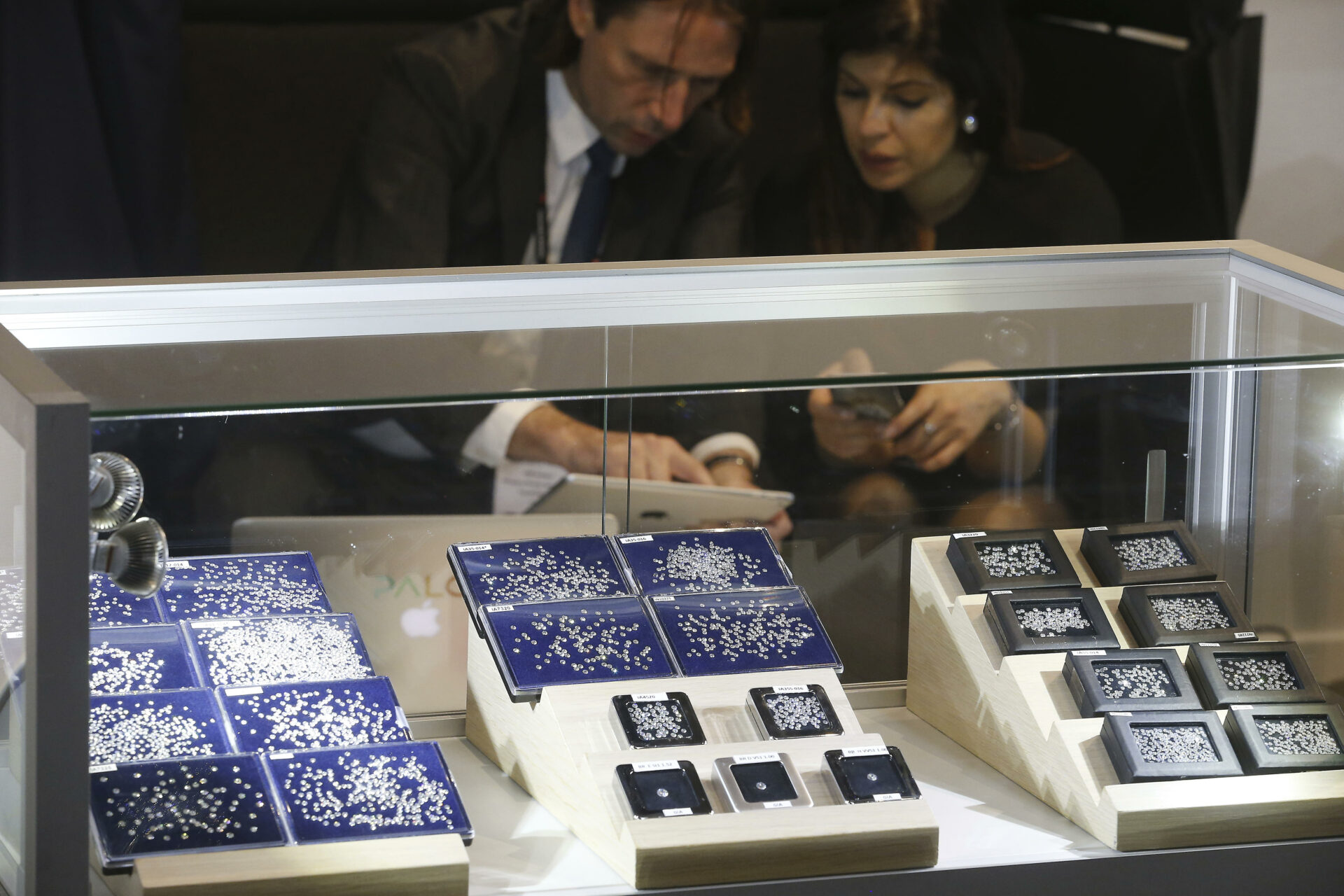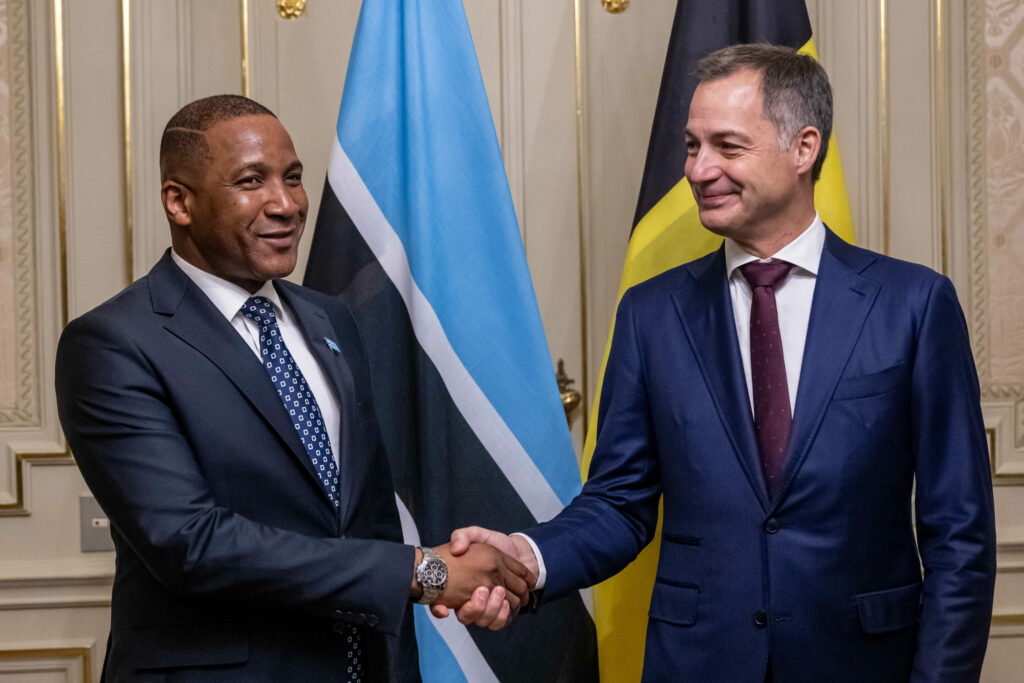The rising popularity of lab grown diamonds is having a "severe" impact on the diamond sector, according to Botswana President Duma Boko who is in Belgium for an annual diamond conference.
Speaking to The Brussels Times, President Boko said it was important for him to visit Belgium, and in particular global diamond hub Antwerp, "to give some assurances, and restore the confidence of the market".
Belgium's once sparkling diamond sector has been shrinking for several years now, partly due to increased competition from the synthetic diamond trade. Synthetic diamonds are particularly popular with one of Belgium's biggest diamond customers, the United States.
Hit hardest is the city of Antwerp, which has been dubbed as the 'diamond capital of the world' and has been one of the world's most important diamond centres since the 16th century.
However more recently, diamond imports and exports have been in rapid decline in Belgium. Since the beginning of 2023, there has not been a single month in which the diamond trade has recorded a positive growth rate.
In 2014, Belgian diamond imports and exports were worth some €15 billion, while in 2023 they had almost halved to €8.5 billion.
In October of this year, Antwerp's diamond sector still comprised of some 1,600 companies and around 6,000 jobs, but traders have warned that the sector could "vanish" in the next five years.

Outgoing Prime Minister Alexander De Croo and Botswana President Duma Gideon Boko are pictured during a diplomatic meeting between the Belgium and Botswana heads of government, Wednesday 27 November 2024 in Brussels. Credit: Belga / Jonas Roosens
President Boko noted that Belgium is "one of the headquarters of the diamond industry", and it has strong links with diamond exporter Botswana.
His visit to Belgium this week coincides with the annual FACETS diamond sector conference in Antwerp, organised by the Antwerp World Diamond Centre (AWDC).
"It's always very important to keep re-energising, reinforcing and strengthening the relationship with industry players," he said, adding that it was "critical" for him to come to Belgium given current uncertainty in the market.
He noted in particular that the appearance of lab grown synthetic stones is having a "somewhat severe" impact on the diamond sector.
"They're no good at all" he said, emphasising that synthetic diamonds could maybe used for the likes of drill bits, but "on someone's finger should be the preserve of the natural".
Lab grown diamonds (as opposed to natural mined diamonds) have grown in popularity among consumers as they are often cheaper, more traceable and have less environmental impact than mined diamonds.
Diamonds need better PR
President Boko has said that Botwsana aims to roll out a marketing campaign to promote natural diamonds, and the "story of Botswana and the transformation that the diamonds bring to the country".
In economic terms, the IMF (International Monetary Fund) has noted that diamonds account for around 80% of exports in Botswana, one third of fiscal revenues, and one quarter of GDP.
"The natural has a story behind it, has people of flesh and blood behind it, and it's it's transforming lives and livelihoods. When you buy it, you are in fact participating in a bigger movement and project of transforming people's lives," said President Boko.
At the annual FACETS diamond sector conference in Antwerp this week, industry stakeholders agreed that there is a need for a co-funded international advertising campaign for diamonds, similar to the kind of generic campaigns rolled out for milk in Europe. There was talk of a starting budget for the campaign of $200 million a year.
"As an industry, we have been putting our heads together for a while," Karen Rentmeesters, CEO of AWDC told Belga.
"At a time when synthetic diamonds are taking our market and prices are falling, we do need to work together. One idea being considered is to put together one pot of money, so to speak, for generic marketing," she said.

Credit: Belga / Nicolas Maeterlinck
What is dulling Antwerp's diamond trade?
Apart from synthetic diamonds entering the market, the diamond trade in Belgium has also been impacted by a number of other factors.
As noted by the National Bank of Belgium, diamond processing previously done in Antwerp has largely moved to India, where the sector can exploit the country’s cheaper labour costs. While Belgium is still a centre for trade in finished diamonds, the rough diamond trade has declined significantly.
Belgium's international competitiveness in the industry has also been challenged, as new players like Botswana have emerged, and boycotted Russian diamonds that used to transit through Belgium are now sold in Dubai.
Antwerp traders have also flagged that they are burdened by bureaucracy and numerous regulations. Antwerp has been acting as the only control point for rough diamonds potentially originating from Russia, which the local industry has said is untenable.
On Wednesday it was confirmed that a second export control checkpoint for the trade of rough diamonds will be established in Botswana.
The Antwerp World Diamond Centre (AWDC) will support this new verification point to ensure that diamonds of Russian origin do not enter G7 country markets. Botswana and the G7 are currently working on a roadmap to make the Botswana verification point operational quickly.

